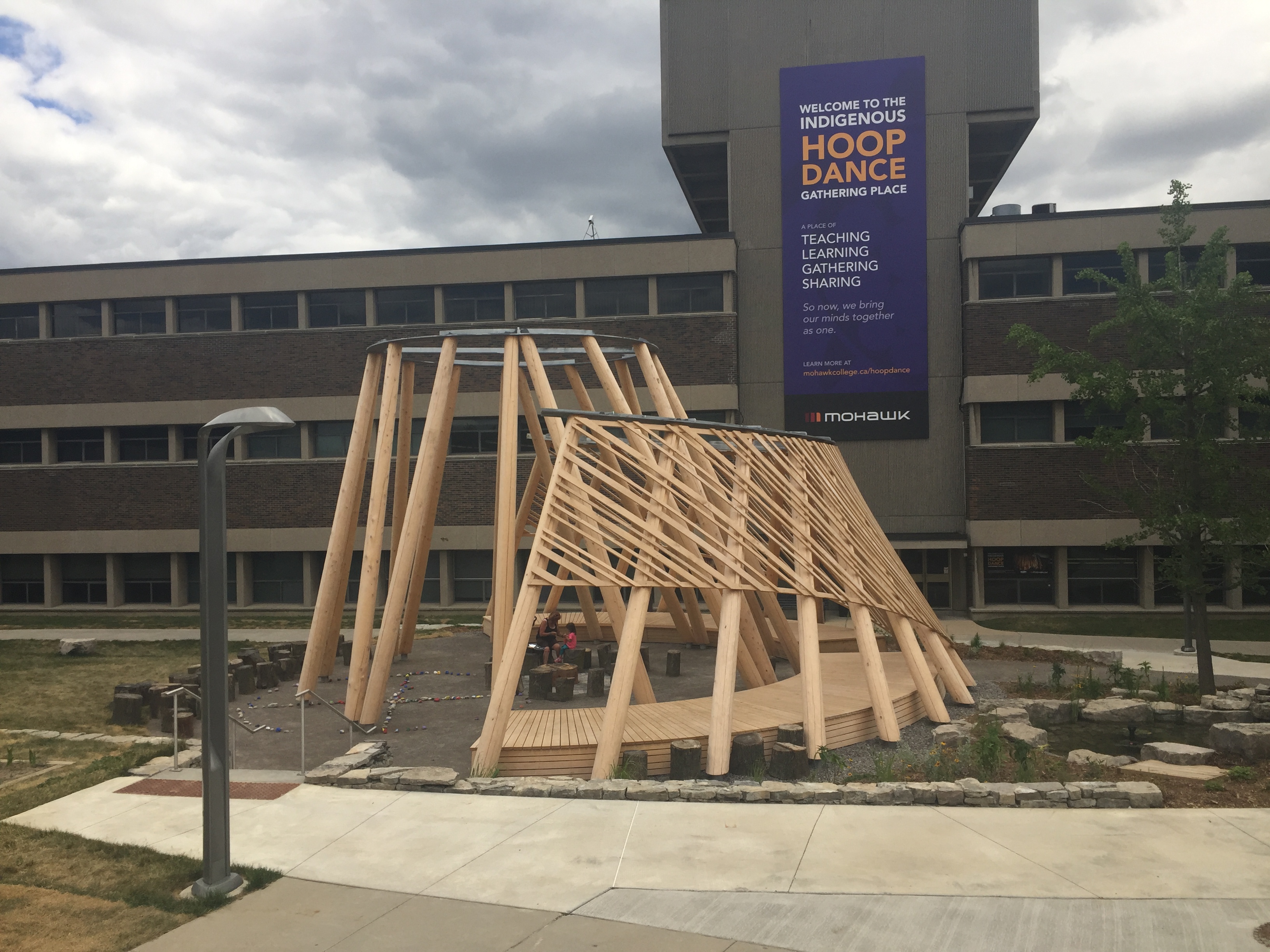Mohawk College has created a gathering space on campus for the Indigenous community, which will be used for ceremonies and classes.
The school revealed the completed space, called the “Hoop Dance Gathering Space,” on June 21.
Mohawk’s Hoop Dance is the “first Indigenous gathering space at any Ontario college or university,” according to a media release from the college.
The space represents the college’s support for Indigenous education and preserving traditional methods of cultural celebration, according to a public statement from Mohawk College President Ron McKerlie.
The space includes an open-air pavilion, fire circle, and water garden. It will serve as a learning environment, public gathering area, and space for the transmission of cultural values for the Indigenous community, according to the college’s website.
The site also produces a traditional crop of corn, beans, and squash in a space designated as the “Three Sisters Garden.”
The gathering space gets its name from the Hoop Dance Ceremony, which serves as a storytelling device for themes including the cycles of life and death, the medicine wheel, and Indigenous history, among others.
Ontario Premier Kathleen Wynne was in attendance for the opening ceremony. Wynne said at the ceremony that the space will serve as a “living monument” to the traditions and knowledge of all Ontario’s Indigenous communities.
“It is a hopeful symbol of the province we are building together, a place for everyone,” she said.
In the Truth and Reconciliation Commission last May, Wynne officially apologized to Indigenous Peoples in Ontario for the maltreatment and genocidal acts committed by former provincial governments.
The Hoop Dance space was financed in part by the Mohawk Students’ Association (MSA) to enhance the cultural experience of students that attend the college.
MSA president Kyle Datzkiw said the association was proud to support the space.
“We want all students to feel welcome and supported from the first moment they arrive on campus. Hoop Dance will do exactly that for Indigenous students,” Datzkiw said.
Mohawk instructs over 11,500 full-time students, 400 of which are Indigenous, according to the release. Over the past 15 years, Mohawk has graduated the most Indigenous students out of the top 10 post-secondary institutions funded by the Grand River Post Secondary Education Office in Ohsweken, the release said.
Carleton University’s campus also strives to recognize the presence of Indigenous students, communities, and culture. As well as acknowledging that the university is situated on unceded Algonquin territory at all official events, the grounds hosts cultural reminders such as the tipi in Nesbitt Park, and the “Locavore” sculpture in the Quad.






